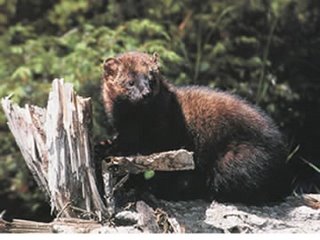 As the compiler of a column called BirdNotes, I regularly get reports of hungry hawks knocking off backyard birds – one once even tried to fly through a pet store window to dine on a budgie. (He was unsuccessful.)
As the compiler of a column called BirdNotes, I regularly get reports of hungry hawks knocking off backyard birds – one once even tried to fly through a pet store window to dine on a budgie. (He was unsuccessful.) Winter is the best hunting season for year-round hawks. The trees are free of leaves and dinner is out in the open, ready for the plucking. For the same reason, winter is the best time to witness “bird hawks” in action.
Often hawks will be seen perched near a backyard birdfeeder. People sometimes feel guilty when they watch a hawk capture a bird attracted to their feeders. Don’t. If the hawk hadn’t gotten its meal at your feeder, it would have found it in another yard or field. Your feeder just makes it a tad more convenient for nature to take its course.
After all, like it or not, it’s a bird-eat-bird world out there.





